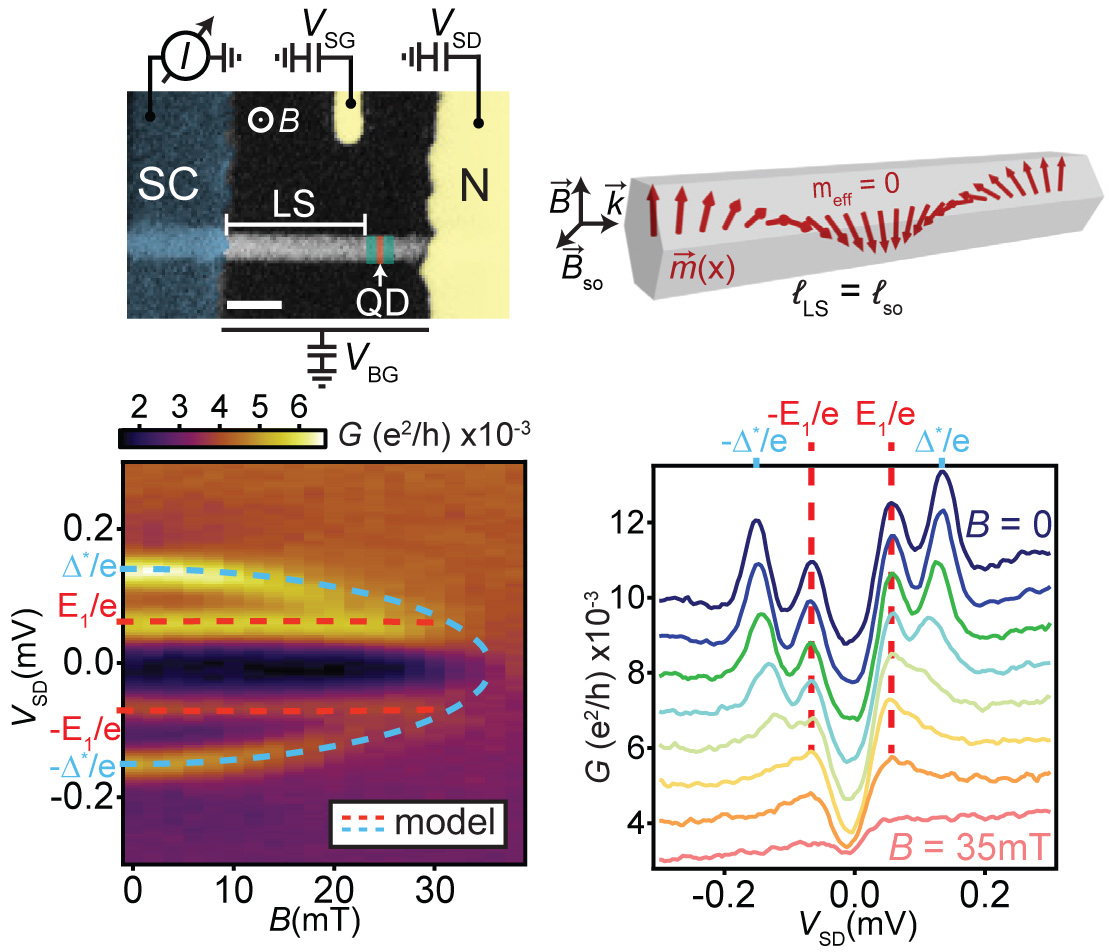suspended CVD graphene
Magnetic field independent sub-gap states in hybrid Rashba nanowires
Most reports on the highly visible topic of Majorana Fermions in solid state systems are based on the observation of magnetic field independent transport resonances at zero bias, so-called zero-bias peaks. Such topologically non-trivial states can form if a conventional superconductor is coupled to a material with a strong spin-orbit interaction.
In the work, published in Physical Review Letters, the team around Dr. Christian Jünger found that in such systems, magnetic field independent states can also form in the topologically trivial phase, either at zero bias, or at a finite bias, because the injected electron spins are rotated by the spin orbit interaction in such a way, that the effect of an external magnetic field is averaged out over the finite length of the nanowire. As a byproduct, this also gives the opportunity to extract the badly established spin-orbit strength in such materials. The finding that not only Majorana bound states can be immune to magnetic fields is crucial for future interpretation of magnetic field measurements of superconducting bound states in general.
The article was highlighted by the editorial board as PRL Editors’ Suggestion as an outstanding publication.
Christian Jünger et al. Phys. Rev. Lett. 125, 017701 (2020)










